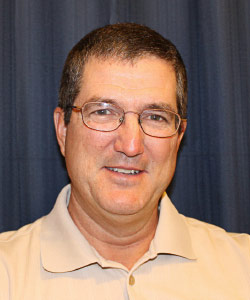Pesticide Label Changes Brought On by the Endangered Species Act
Recorded April 29, 2025
Download presentation slides (PDF, 4.1 MB)
Description
This training covers the following topics:
- Why are pesticide labels undergoing changes to protect endangered/threatened species?
- What changes can you expect to see on pesticide labeling?
- How implementable are these changes? How can you ensure you are compliant?
- What is the current status of ESA-required label changes?
- Where can I find more resources on this topic?

Niranjana Krishnan
Niranjana Krishnan
Assistant Professor, Department of Entomology at the University of Maryland, College Park
Niranjana Krishnan is an assistant professor in the Department of Entomology at the University of Maryland, College Park. She is also serving as Maryland’s Pesticide Safety Education Program Coordinator. Her research focuses on assessing the risks of pesticide exposures to insects. Her extension work has focused on changes to pesticides labels due to recent changes in the implementation of the Endangered Species Act.

Bill Chism
Bill Chism
Chair, Endangered Species Act Committee, Weed Science Society of America
Bill has a PhD in Weed Science. He grew up working on a vegetable farm in California. He also worked in California for the extension service, a pesticide manufacturer, and has worked over 20 years at OPP before his retirement. Bill lives with his wife, a cat, two dogs, and two horses in Maryland.

Mark VanGessel
Mark VanGessel
Extension Weed Scientist and a faculty member in the Plant and Soil Science Department, University of Delaware
Mark VanGessel is the extension weed scientist at the University of Delaware and a faculty member in the Plant and Soil Science Department. His extension and research focus is on integrated weed management for herbicide resistant weeds as well as the intersection of weed ecology and weed management. He works with grain crops as well as commercial vegetables.

Kurt Vollmer
Kurt Vollmer
Extension Weed Management Specialist, University of Maryland
Kurt’s research focuses on evaluating different weed management tactics. His extension program focuses on disseminating weed control and other relevant information to growers and other constituents.
Q&A
Q. Can you talk about the modifications for rodenticides?
A. The registrants have requested changes to the rodenticide strategy, but I do not think the EPA has responded to those suggestions.
Q. What will be the impact on microbial pesticides and biochemical pesticides?
A. All new active ingredients, conventional, biological, and microbial are evaluated for ESA impacts. For registration review they are concentrating on conventional chemicals but there are PULAs for microbials.
Q. How will the services proposal to remove the definition of harm from the ESA impact these mitigation requirements.
A. As you stated, FWS has proposed to removed the word harm from the definition of effects. They are accepting comments until mid-May. I have no crystal ball, but I anticipate if they go forward with this there will be a court filing to stop this, which may take years to resolve.
Q. I did not see ornamental plants in the crops listed. Will ornamental crops be impacted by these changes?
A. The Herbicide Strategy talks about “To include cultivated land (including orchards, vineyards, Christmas trees, row crops, specialty crops, and flooded crops) but not pasture/grass or range lands.” So ornamentals are currently not impacted. That could become a problem in the future because many of the listed mitigations are not helpful for ornamental production systems.
Q. How do these requirements affect greenhouse applications? If at all...
A. Currently the Herbicide Strategy does not address greenhouse uses. We have not seen the Insecticide Strategy to see what it covers.
Q. What is the best method for record keeping, and have the states issued any guidance on the recommended practices?
A. There is a downloadable Excel file on the EPA mitigation website that keeps track of runoff mitigation points.
